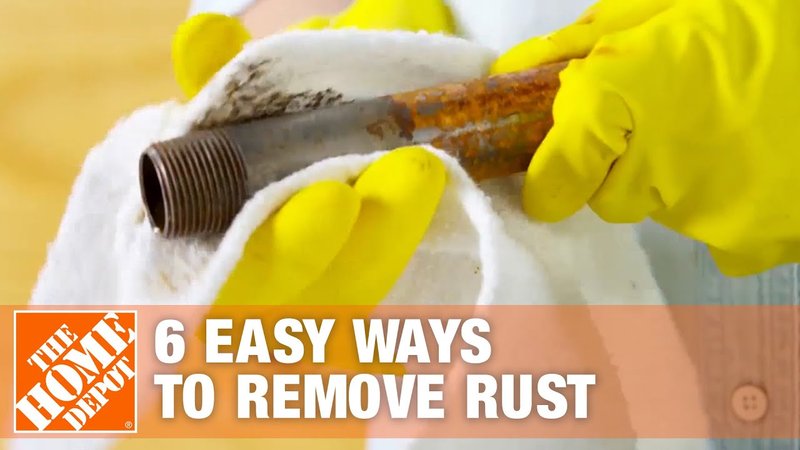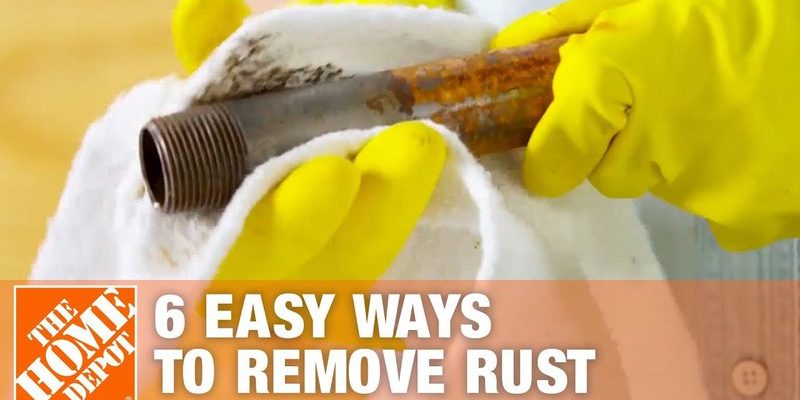
The good news is that removing rust doesn’t have to be a frustrating or harsh experience. There are gentle methods to tackle this problem using common household items. We’ll take a closer look at these methods, allowing you to refresh your interior door hardware with ease and care, just as you would when tending to your beloved plants.
Understanding Rust: Why It Happens
Before we dive into how to remove rust from interior door hardware, let’s understand what rust actually is. Rust forms when iron or its alloys, like steel, come into contact with moisture and oxygen over time. It’s a bit like a slow-moving thief, creeping in and damaging the metal, which can lead to corrosion. You might notice rust on metal doorknobs, hinges, or lock sets, especially in humid environments or older homes where moisture levels haven’t been controlled well.
Additionally, if you’ve recently had a leak or if your windows aren’t sealed properly, the increased humidity can speed up the rusting process. It’s important to regularly check these areas and act quickly if you notice any signs of rust. Catching it early can save you a lot of trouble down the line. So, let’s tackle this rust head-on!
Gathering Your Tools
First things first: before you start removing rust, make sure you have the right tools at hand. Here’s what you’ll need:
- White vinegar – A powerful, natural acid that breaks down rust.
- Baking soda – A gentle abrasive that is effective for mild rust.
- Soft cloth or sponge – For application and wiping.
- Old toothbrush – Great for getting into small crevices.
- Steel wool or fine-grit sandpaper – Use this sparingly if the rust is severe.
- Olive oil or cooking oil – To help lubricate your hardware afterward.
Having these items on hand will not only make the process smoother but will also ensure you’re ready to tackle different levels of rust. Getting rusty door hardware back to its original shine can be a satisfying mini-project that adds value to your home.
Using White Vinegar: A Natural Solution
One of the most effective gentle methods for removing rust is using white vinegar. This household staple is acidic enough to break down rust without causing damage to your hardware. Here’s how you can use it:
1. Soak the Rusty Hardware: If possible, remove the hardware and soak it in a bowl filled with white vinegar. Let it sit for about 30 minutes. If removal isn’t practical, soak a cloth with vinegar and wrap it around the affected area.
2. Scrub Away the Rust: After soaking, use an old toothbrush or a soft cloth to scrub away the rust. You should see it starting to lift quite easily. The vinegar does the hard work while you just help it along.
3. Rinse and Dry: Make sure to rinse the hardware with water and dry it thoroughly. Leaving moisture can lead to more rust in the future, which we want to avoid.
This method is particularly useful for doorknobs and small hinges that are easily removable. Plus, you can feel good about using a natural product that doesn’t involve harsh chemicals!
Baking Soda Paste: A Gentle Abrasive
If you’ve got a bit of rust clinging to your hardware, a baking soda paste can help. Baking soda is not only a kitchen staple but also a remarkable cleaner. Here’s how to use it:
1. Create the Paste: Mix three parts baking soda with one part water to create a thick paste.
2. Apply the Paste: Spread this paste over the rust spots on your door hardware. You can use your fingers or a cloth to ensure it coats the affected areas.
3. Let It Sit: Allow the paste to sit for about 10 to 15 minutes. This gives it time to work on the rust.
4. Scrub and Rinse: Use an old toothbrush to scrub the area lightly. Afterward, rinse it off with water and dry it thoroughly.
This method is great for those pesky areas where rust has formed but hasn’t taken over completely. Plus, the gentle abrasive nature of baking soda means it won’t scratch or damage your hardware.
Dealing with Persistent Rust: Steel Wool and Sandpaper
Sometimes, rust can be a stubborn foe, requiring a bit more elbow grease. If the vinegar and baking soda methods don’t completely eliminate the rust, you may need to resort to using steel wool or fine-grit sandpaper. Here’s how to do this without damaging your hardware:
1. Choose the Right Grit: If using sandpaper, go for a fine-grit type (around 300 grit). This will help you avoid scratching the surface of your hardware.
2. Gentle Scrubbing: Lightly rub the rusty areas with the steel wool or sandpaper. Focus just on the rust to avoid removing any finish from the metal. Remember, you’re only trying to remove the rust, not the entire finish!
3. Clean the Area: After you’ve scrubbed away the rust, wipe the area with a cloth to remove any debris.
4. Protect with Oil: Finally, apply a small amount of olive oil to protect the hardware and keep moisture at bay.
Using steel wool or sandpaper can feel a bit more aggressive, so use it sparingly and with care. You want to keep the integrity of your hardware while also removing those pesky rust spots.
Preventing Future Rust Development
Now that you’ve successfully removed rust from your interior door hardware, you’ll want to take steps to prevent it from returning. Here are some easy preventative measures:
1. Regular Checks: Make it a habit to check your door hardware for any signs of rust, especially during seasonal changes when humidity levels fluctuate.
2. Keep It Dry: Ensure that the areas around your doors are well-ventilated. If your home tends to get humid, consider using a dehumidifier.
3. Lubricate: After cleaning, apply a thin layer of olive oil or a dedicated lubricant to your door hardware. This protects against moisture and provides a barrier against future rust.
4. Avoid Water Exposure: While your door hardware is meant to endure the elements, minimize water exposure when cleaning or during weather changes.
By following these simple tips, you not only ensure that your hardware stays rust-free but also extend its overall lifespan.
Removing rust from your interior door hardware doesn’t have to be a daunting task. With gentle methods like white vinegar, baking soda, and a bit of care, you can restore your hardware without harsh chemicals or extensive effort. Just think of it as giving your home a little TLC.
By understanding the causes of rust and taking proactive steps, you can keep your door hardware looking fresh and new, just like your home deserves. So, gather those household items and get to work. Your door hardware—and your home—will thank you for it!
